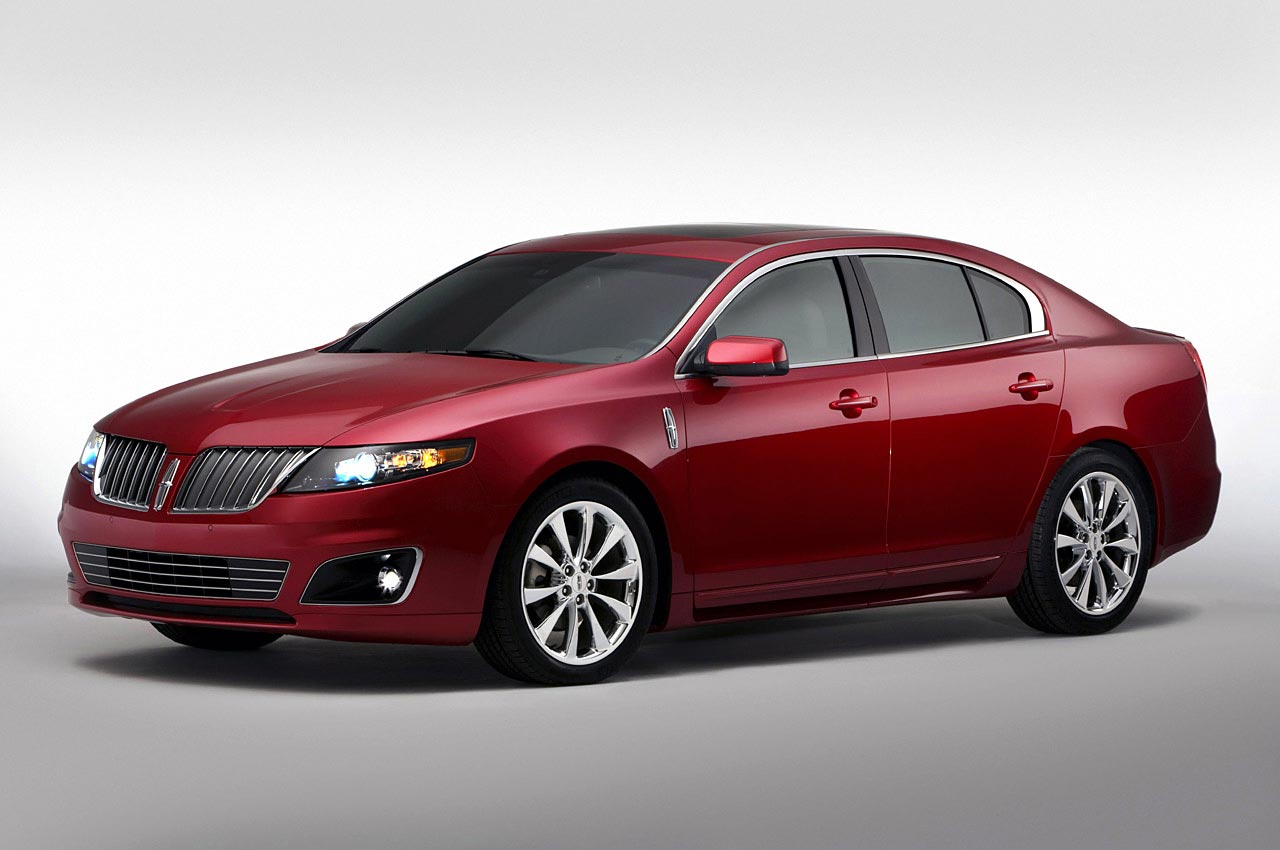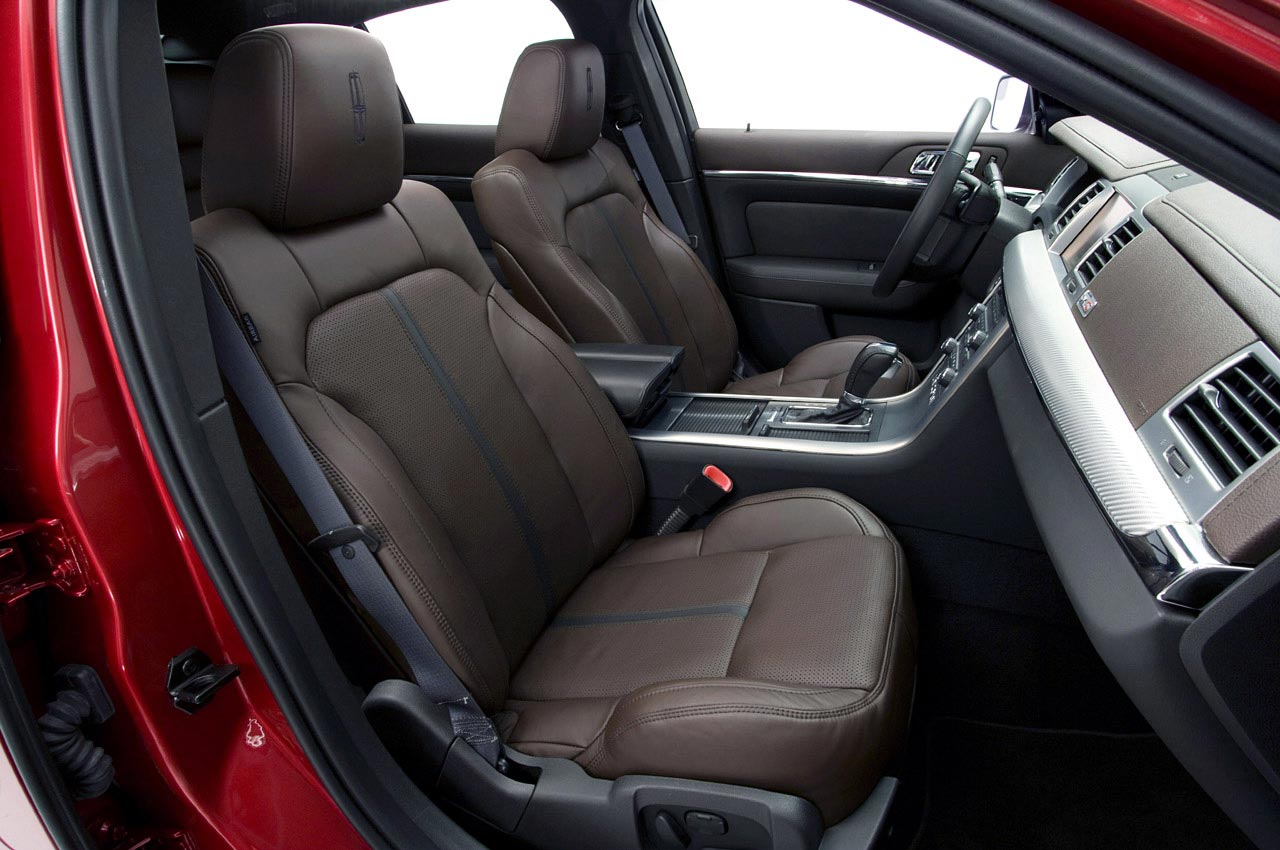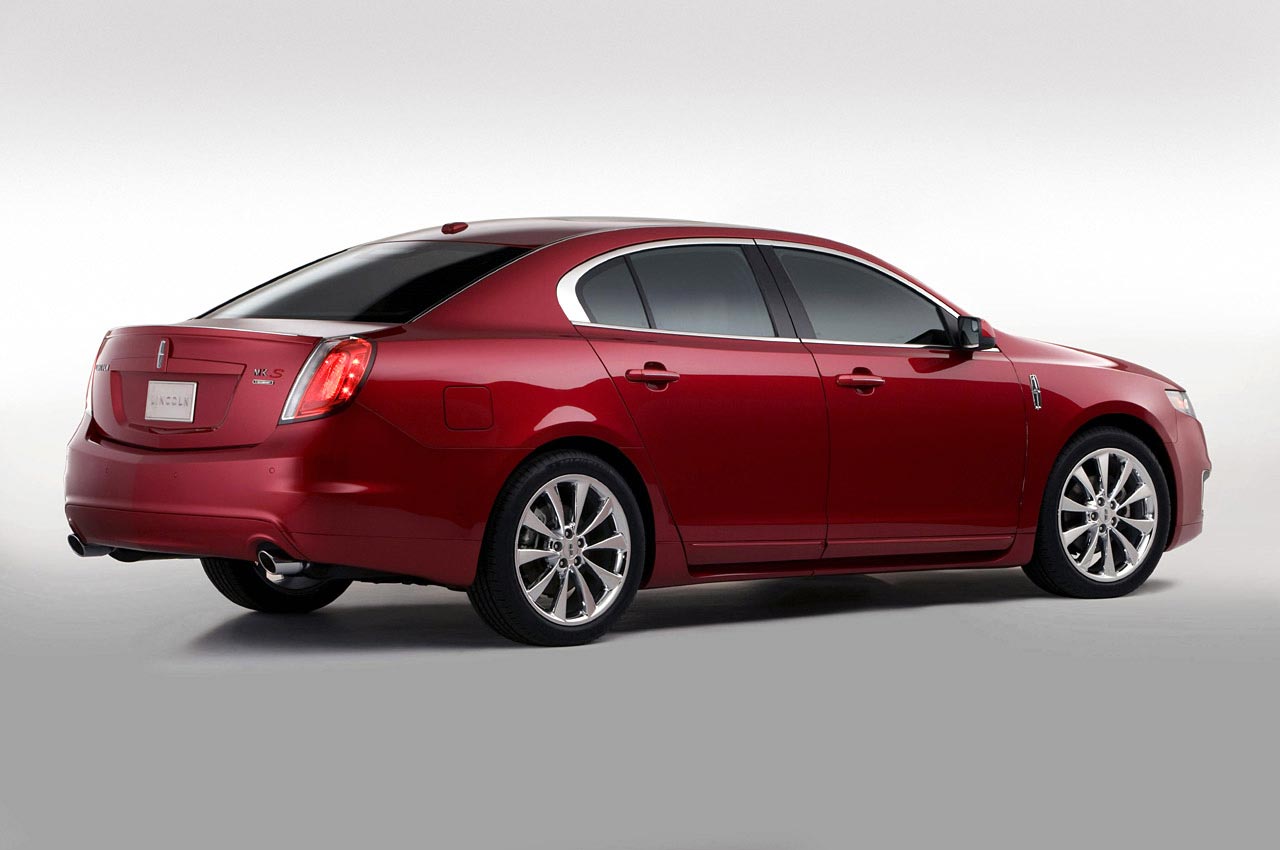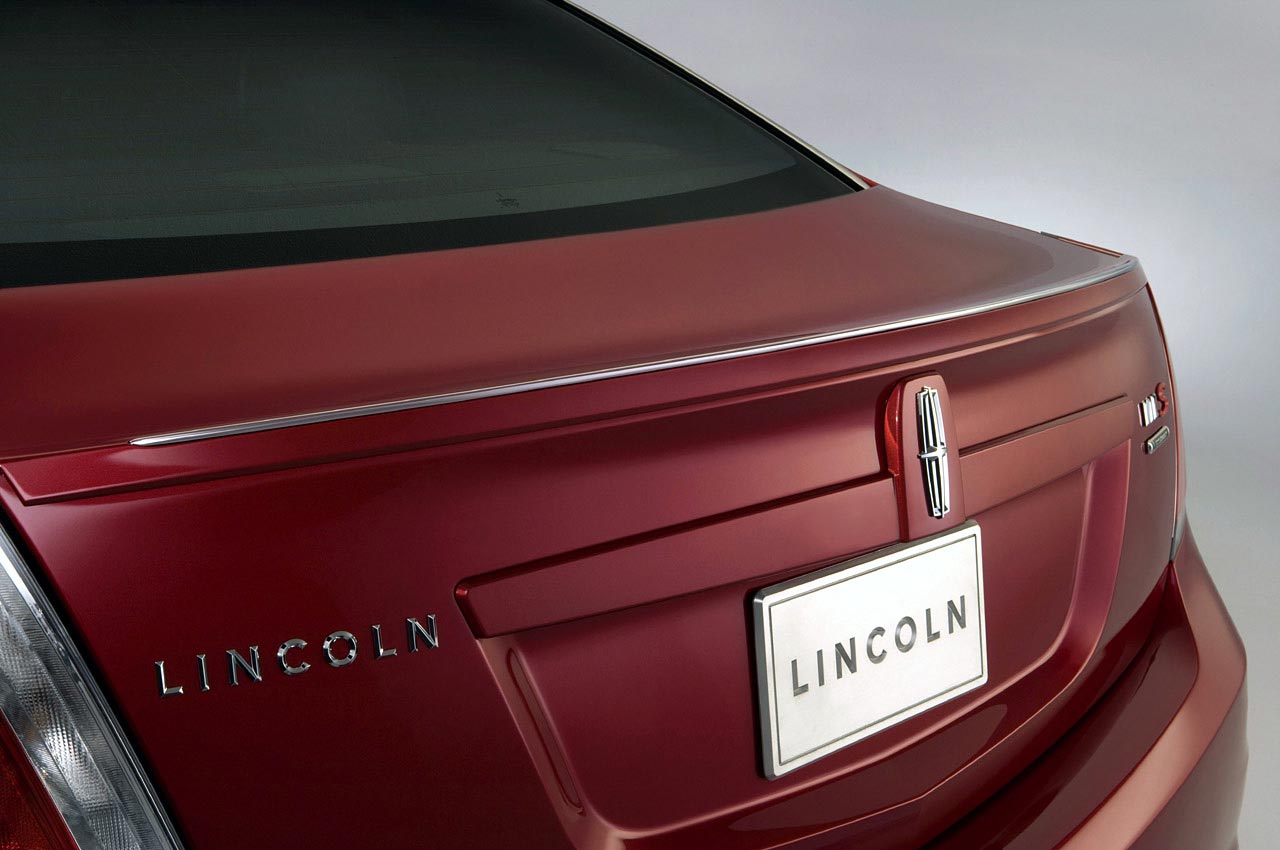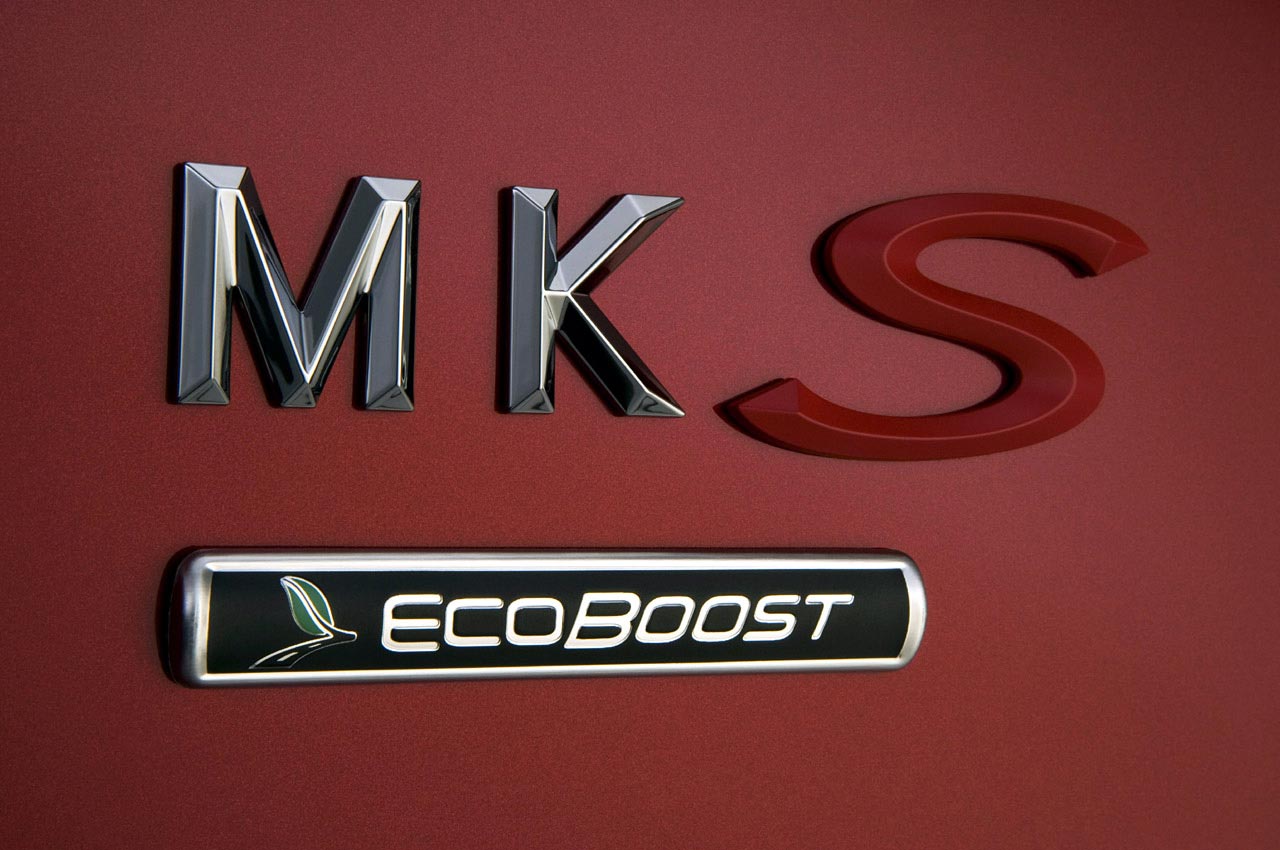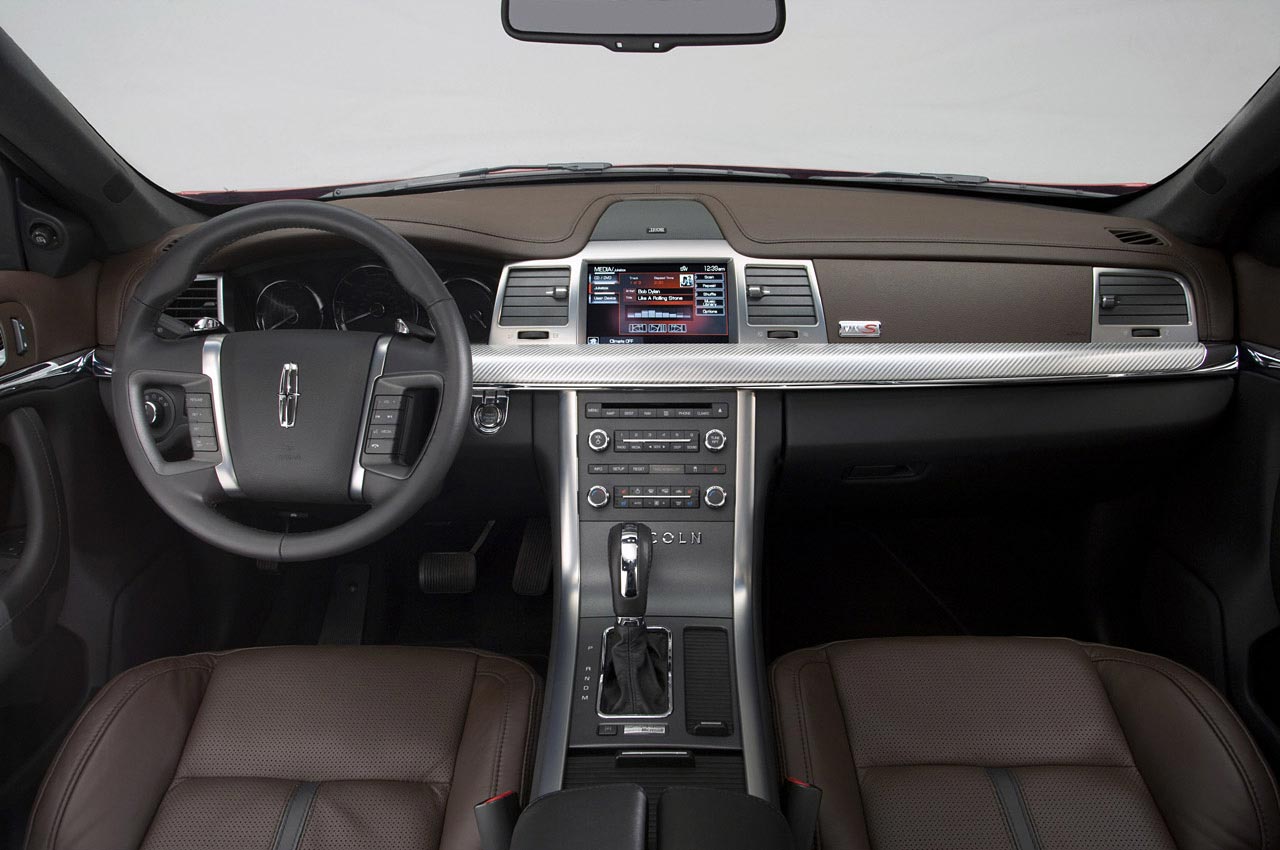The Lincoln MKS is among the first Ford Motor Company vehicle to introduce a premium twin-turbocharged 3.5-liter EcoBoost V-6 engine for the 2010 model year and is expected to deliver best-in-class highway fuel economy of 25 mpg.
The MKS rides on a platform that is significantly modified from the previous generation Ford Five Hundred/Taurus which itself was derived from the Volvo S80. The Lincoln engineers made significant revisions to the suspension in preparation for its duties as a Lincoln prior to the launch of the MKS. Taking a cue from the popularity of the SUVs and crossovers, Lincoln designed the MKS with a higher seating position than most other cars in its class. The result is something more akin to the command seating of an SUV with its improved visibility found in those other vehicles.
The visual presence of the MKS is aided by the tall, rising belt-line although this does have an unfortunate effect inside the car of sitting deep within it even though you do sit higher than in most competitors. The interior of the MKS has a very clean layout and thanks to Ford’s SYNC and navigation systems it’s remarkably easy to use with a minimum of buttons and no need for a controller like BMW’s iDrive or Audi’s MMI.
The center stack has rows of buttons and knobs for the audio and climate control plus selectors for the navigation, menu, setup, etc. Most of the interaction is done through a high resolution touch screen that provides a graphical interface that is both attractive and remarkably easy to use. Simple intuitive icons on the screen allow the driver to set the screen to display either a single or three pane interface.
The voice control system is activated by a button the steering wheel, that brings up a menu of available commands on the screen. The commands are simple and easy to remember and the system works reliably. You can even enter points of interest by name without ever touching the screen, something that can’t be achieved in most German vehicles in the segment.
Most other cars in this luxury sedan segment feature V8 engines of about 4.2-4.6-liters as their top engines. These engines typically produce about 325-360 hp. This Lincoln’s twin turbo-charged V6 produces 355 hp and 350 lb-ft of torque and thanks to its advanced fuel system, it produces that torque from as low as 1,500 rpm. The result is an powerplant that feels like a much larger engine.
The MKS features adaptive damping and even with big 20 inch wheels and tires, it provides excellent ride quality without ever feeling floaty. In spite of the comfortable ride the nearly 4,300 pound MKS is able to get around corners at significant speeds and yet without drama.
That EcoBoost engine was created to achieve improved fuel efficiency without sacrificing the performance expected in the segment. Here Ford and Lincoln have succeeded. The MKS EcoBoost sprinted to 60 mph in just 5.4 seconds and averaged 19 mpg over a week of mostly city driving. Cruising at 70 mph the MKS achieves a respectable 25 mpg. The MKS with all-wheel-drive and EcoBoost starts at $47,760 while our example loaded with nav, the special appearance package and the panoramic sunroof bring the final tally on our tester to $56,925, a very reasonable price compared to the rest of the segment.

